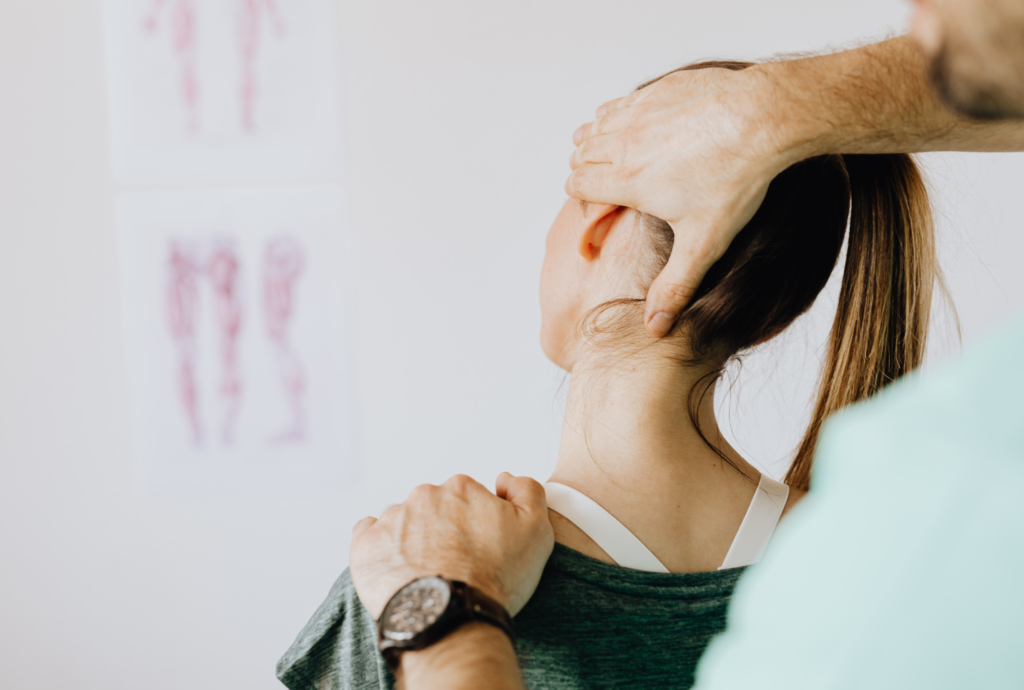Sports Hernia:
Welcome to our investigation of sports hernia, a common but sometimes misdiagnosed sporting condition. We’ll discuss every detail of a sports hernia in this in-depth guide, covering everything from its origins and symptoms to practical treatment options. Let’s get started and clarify this common problem faced by players.

What is a Sports Hernia?
Despite its name, a sports hernia is not the same as a regular hernia in that it causes a noticeable bulge. Rather, there is an incision or stretch in the soft tissues of the waist or lower abdomen. Unlike regular hernias, sports hernias often develop as a result of repeated, forceful twists or turns involved in sports. They are not usually caused by lifting heavy objects.
Signs and Symptoms:
Initial management of sports hernia depends on the recognition of their symptoms. Keep an eye out for chronic back trouble, especially when exercising. Unlike a normal hernia, there may be no visible bulge. Alternatively, athletes may experience pain that becomes worse with certain activities, which will impair their performance and leave them frustrated.
Causes:
Sports hernias are often associated with rapid changes of direction, such as in football, hockey and soccer. Repeated stress on the lower abdominal muscles and tendons can cause microtears to develop, ultimately resulting in a sports hernia. Preventing this injury requires an understanding of the exact activities that lead to it.

Diagnosis:
Sports hernias can be difficult to diagnose because their symptoms can mimic those of other diseases. To accurately identify the problem, a thorough physical examination, imaging tests, and sometimes diagnostic injections are used. Seeking medical attention as soon as symptoms appear is essential for quick and accurate diagnosis.
Treatment Options:
The good news is that non-surgical treatments can often successfully manage sports hernias. Typical conservative treatment regimens include physical therapy, specific exercises, and rest. But sometimes, surgery may be required to restore the injured tissues and relieve long-term symptoms.
Recovery and Rehabilitation:
A comprehensive rehabilitation program is necessary for a successful recovery, regardless of which method of treatment is chosen—surgical or conservative. This usually involves a gradual return to exercise with an emphasis on increasing flexibility and strengthening core muscles. It is essential to be patient and follow the rehabilitation plan to avoid recurrence in the future.

Preventions:
Prevention is always better than cure. By incorporating specific exercises that focus on core strength and flexibility into their training regimen, athletes can reduce their risk of sports hernia. In addition to proper warm-up, technical adjustments and progressive intensity increases can help reduce the risk of injury.
Conclusion:
Athletes can overcome sports hernias if they are aware of the condition, seek medical attention promptly and are dedicated to their recovery. Having a thorough understanding of sports hernias can help you avoid injuries and perform at your best, whether you’re a weekend warrior or a professional athlete.
Table of Contents
FAQ’S-
What is a Sports Hernia?
Despite its name, a sports hernia is not the same as a regular hernia in that it causes a noticeable bulge. Rather, there is an incision or stretch in the soft tissues of the waist or lower abdomen. Unlike regular hernias, sports hernias often develop as a result of repeated, forceful twists or turns involved in sports. They are not usually caused by lifting heavy objects.
How to treat Sports Hernia?
A mixture of conservative (non-surgical) methods and sometimes surgical intervention are used to treat sports hernias. It is important to remember that specific treatment strategies may change depending on the extent of the damage and the general health of the patient. For personal guidance, always seek the help of a health care professional.
Treatment methods are outlined below:
Rest and changing your activities:
-At first, athletes may need to make adjustments or take a temporary break from activities that make their symptoms worse.
-Rest reduces the chance of further damage and promotes healing of injured tissues.
Physiotherapy:
-The cornerstone of conservative treatment is a well-organized physical therapy program.
-Physical therapists create workouts that target the muscles in the core, increase range of motion, and address movement patterns that cause injury.
-Stretching, strengthening, and proprioceptive training are examples of therapeutic treatments.
Anti-inflammatory drugs:
-To treat pain and inflammation, doctors may prescribe nonsteroidal anti-inflammatory drugs (NSAIDs).
-Because prolonged or incorrect use of these medications can have negative consequences, it is important that you take them under the supervision of a healthcare provider.
Exercises to build your core:
-Immobilizing the affected area requires targeted workouts that target the abdominal, hips, and pelvic muscles.
-A physical therapist can provide an exercise regimen that is specifically designed for each patient.
Using injection therapy:
-Injections of corticosteroids may be used in some situations to reduce pain and inflammation.
-For precise injection placement, fluoroscopy or ultrasound guidance may be used.
Surgery:
-Surgery may be suggested in situations when conservative treatments are ineffective or when there is a severe sports hernia.
-Surgical repair involves reconstruction or suturing of injured tissues in the waist or abdomen.
-Recovery can be faster than simple open surgery due to advances in less invasive procedures.
Rehabilitation after surgery:
-Rehabilitation after surgical intervention is very important.
-To progressively resume physical activity, a physical therapy program that focuses on regaining strength and flexibility is usually recommended.
Gradual resumption of activity:
-Athletes who want to resume their sports or fitness should follow a systematic strategy.
-It is important to follow the rehabilitation plan as rushing recovery may increase the chance of recurrence.
A proper diagnosis and individualized treatment plan should be obtained by consulting a health care specialist, such as an orthopedic surgeon or sports medicine physician. They are able to select the best course of action for rehabilitation by evaluating the severity and taking individual characteristics into account individual characteristics.
Sports Hernia recovery time
Sports hernia healing time varies depending on the severity and type of care. This may take several weeks or months if conservative treatments such as physical therapy and rest are used. After surgery, a few weeks of restricted activity may be required, and full recovery may take several months. Recovery is influenced by individual variables and rehabilitation compliance. To guarantee a gradual return to exercise and reduce the risk of re-injury, athletes should follow a well-planned plan and collaborate closely with health care experts.